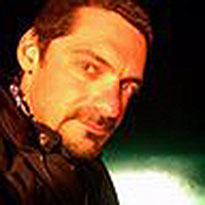
DANIELE BARETTIN
- Details
- Category: POSTDOC

PostDoc fellow
Nano&Optoelectronics group (OLAB)
Dept. Electronics Engineering
University of Rome "Tor Vergata"
via del Politecnico 1, 00133 Roma (Italy)
Tel +39 0672597777
Fax +39 0672597939
This email address is being protected from spambots. You need JavaScript enabled to view it.
I have a master degree in theoretical solid state physics from University "La Sapienza" in Rome, Italy, with main fields of studies in Statistical Mechanics, Complex Systems Physics, Numerical Simulations and Modeling, and Solid State Physics. My master thesis, "Two algorithms for finding ground states: a numerical comparison"
concerned a study of Monte Carlo Simulated Annealing and Parallel Tempering algorithms".
My final mark was 106 on 110, according to the Italian evaluation system.
I started my Ph.D. project in September 2006 with the Mathematical Modeling Group under the supervision of Professor Morten Willatzen and Assistant Prof. Benny Lassen at Mads Clausen Institute, University of Southern Denmark-SDU, in Sønderborg.
During my Ph.D. work supported financially under the FTP QUEST program (Quantum Dot Structures Enabling Light Slow-Down and Amplification), I carried out research regarding electronic bandstructure models with emphasis on the incorporation of electromechanical effects such as lattice mismatch, continuous strain effects, piezoelectricity, and spontaneous polarization. On the electronic bandstructure side, I have studied in details k*p. theory, and a considerable part of my contribute concerns the influence of zincblende and wurtzite crystal structures on the electronic properties of quantum-confined structures accounting for full electromechanical coupling.
As a part of my Ph.D. course activity, I also followed a course of "Molecular Dynamics" with Professor Giovanni Ciccotti at University "La Sapienza" and a course of "Introduction to Computer Simulation Methods in Solid State Physics – DFT theory" with Professor Mauro Rovere at University "Roma3", both in Rome, Italy. I also carried out empirical tight-binding and atomistic valence force fields calculations during my half-year stay at Purdue University, Indiana, USA in the group of Professor Gerhard Klimeck, and upon my return to Denmark, I continued studies of strain by comparison of continuous and atomistic models.
I was first author in a Phys. Rev. B paper, on coupling the subject of multiband k*p electronic structure calculations with electromagnetic induced transparency investigations of conical InAs/GaAs quantum-dot structures with wetting layers, and I have published one journal paper in Microelectronics Journal on piezoelectric models of semiconductor quantum-dot structures. Furthermore, I am coauthor on two papers appeared in Superlattices and Microstructures. Both papers study electronic bandstructures of quantum dots, one with focus on ring-shaped structures and the other on the accuracy of continuum elastic models versus VFF atomistic elastic models for electronic energies. In total, my Ph.D. study has allowed me to co-author 4 journal papers, 4 peers reviewed proceeding contributions, and 9 poster or oral presentations at international conferences.
During my Ph.D., I also developed an individual project of Statistical Mechanics with Professor Paolo Sibani from the faculty of Physics of SDU in Odense as part of my course activity. I implemented a new version of a Monte Carlo entropic algorithm for the study of the probability density of an Edwards Anderson spin glass systems. This study has been published as Phys. Rev. E paper.
During the final months of my Ph.D., I started to coordinate a collaboration with the Opto & Nanoelectronics Group at the University of Rome "Tor Vergata" in Rome, Italy, headed by Professor Aldo Di Carlo. The aim of this collaboration was to combine the approach and the methodology of the two groups in the study of quantum-dot heterostructures. I also worked on modeling strain fields and bandstructure for quantum dot with varying gradient concentration, and on developing a new algorithm which combines VFF and Monte Carlo algorithms for the studying of equilibrium configurations of quantum dot heterostructures with different gradient concentrations. These studies are still in progress.
I handed in my thesis work "Multiphysics effects in quantum-dot structures" in September 2009, and I defended successfully this work the 12th of January 2010. Then I was employed as a Postdoc in the Mathematical Modeling Group at MCI until August 2010. I have published as first author an almost exhaustive article in Communications in Computational Physics about comparison between continuum and atomistic Valcence Force Fields strain models.
From February 2011 I have been employed as postdoc in the Opto & Nanoelectronics Group at the University of Rome "Tor Vergata". The main line of research I am following concerns the study and comparison of atomistic and continumm models in the analysis of the opto-electronical properties of Quantum Dots. I have joined the international conferences of NUSOD (Rome, September 2011) and TMCS (Leeds, January 2012) In October 2011 I was invited for one mounth as visiting researcher in Ioffe Institute in Saint Petersburg.